According to this interesting study, concrete is currently the second most consumed material globally, second only to water. Over the past few centuries, it has played a pivotal role in construction, being present in the most complex engineering projects, such as bridges, tunnels, power plants, and many others.
Concrete technology has steadily progressed, birthing various subproducts and spinoffs like self-levelling concrete, shotcrete, fiber-reinforced concrete, and numerous other adaptations tailored to address specific requirements.
Among fiber-reinforced concrete alternatives, glass-fiber reinforced concrete (GFRC) has gained popularity with architects given its lightweight features, increased plasticity and flexibility, and high compressive strength. But what exactly is a glass-fiber reinforced concrete? What are its key features, and pros and cons? How to obtain the perfect fiber-concrete mix?
In this article, we will cover all the characteristics of glass-reinforced concrete in-depth and understand its applicability in construction projects.
What is Glass-Fiber Reinforced Concrete (GFRC)?
Glass-Fiber Reinforced Concrete (GFRC) is a composite material that blends traditional concrete components (cement, water, aggregates, and admixtures) with specially engineered glass fibers to create a final product with increased compressive, flexural, and tensile strength.
Being extremely versatile, GFRC (also known as GRC – Glass Reinforced Concrete) has been broadly used in the construction industry for many elements, such as Architectural Cladding, Facades and Panels, Decorative Features, Special Ceilings (as detailed in the picture below), and even art and sculptures.
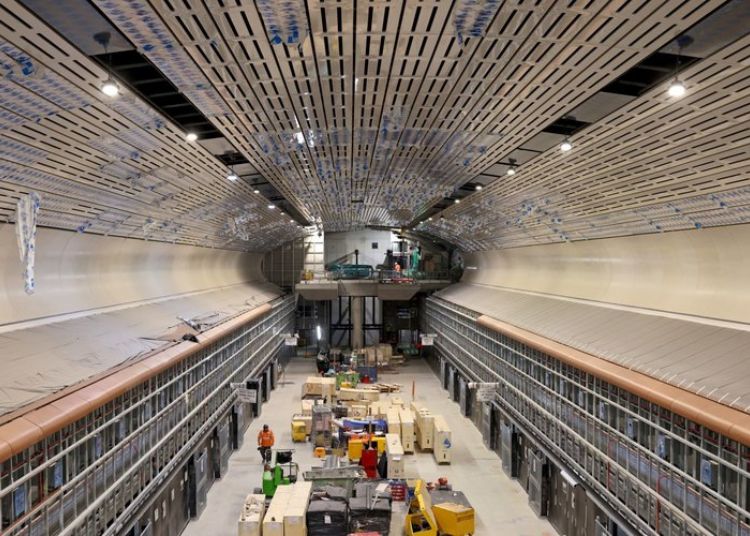
The Glass fibers used in concrete (see picture below) are made from alkali-resistant glass. This stems from the composition of glass, primarily silica. In an alkaline environment like concrete, which typically boasts a pH ranging between 12 and 13, regular glass could quickly deteriorate due to the alkali-silica reaction (ASR).
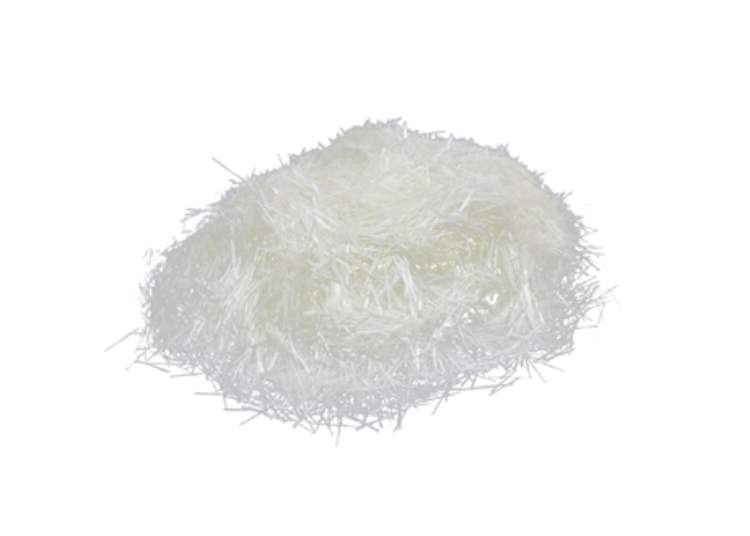
Why is glass fiber used in concrete?
Glass fibers can significantly increase concrete performance. Some of the most common reasons to use glass fiber in concrete are detailed in the table below:
Reasons for Using Glass Fibers in Concrete | Description |
Strength Enhancement | Reinforces concrete, boosting tensile, flexural, and impact strength, reducing cracking, and enhancing overall durability. |
Corrosion Resistance | Non-corrosive nature makes glass fibers ideal for concrete reinforcement, especially in harsh environments or marine applications, as they do not rust or corrode like steel. |
Reduced Weight | Lightweight properties contribute to lowering the overall weight of concrete structures while maintaining or improving strength. |
Crack Control | Helps control shrinkage cracking, limiting the formation and spread of cracks within the structure, thereby enhancing its durability. When glass fibers are added to reinforced concrete composites, they serve as a bonding agent and help to distribute stress from the fibers to the substrate, increasing the resistance against crack initiation, particularly in terms of interface shear resistance. |
Durability | Akali-resistant Glass fibers resist chemical reactions in alkaline environments (like concrete), ensuring structural integrity over time. |
Thermal and Electrical Insulation | In specific applications, glass fibers offer insulation against thermal and electrical conductivity, providing additional functional benefits in certain construction scenarios. |
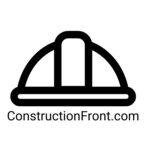
ConstructionFront.com notes:
- The performance of glass reinforced concrete is heavily dependent on the amount of glass fiber (GF) used in concrete.
- The excessive use of GF might significantly impact mix consistency/uniformity, workability (slump), and strength, as detailed in this study by Academics of Middle East College
How much glass fiber should be added to Concrete?
As an overall guideline, a typical mix of GFRC would include from 1% to 3% of glass fiber of the total mix, which means that for every 100 kilograms (kg) of cementitious materials, 1 to 3 kilograms of glass fibres would be added.
However, it is important to note that the optimal quantity of glass fiber in the mix will depend on several aspects, such as:
- Desired Properties: The specific properties required in the finished GFRC, such as strength, durability, or flexibility, can influence the amount to be added.
- Fiber Length and Diameter: Different lengths and diameters of glass fibers may have varying effects on the concrete mix. Manufacturers often guide the optimal usage based on their product specifications.
- Mix Design and Project Requirements: The overall mix design, including the composition of aggregates, admixtures, and the desired consistency of the concrete, can also heavily influence quantities to be used.
Glass-Fiber Reinforced Concrete - Pros and Key Features
Glass-Fiber Reinforced Concrete (GFRC) has specific characteristics that make it a sought-after material for construction projects. These include:
- Strength and Durability: GFRC exhibits a high strength-to-weight ratio, offering excellent durability and structural integrity. It can withstand significant loads and stresses while maintaining its form and integrity.
- Lightweight Nature: Compared to traditional concrete, GFRC is considerably lighter, making it easier to handle, transport, and install. This might lead to savings in transportation/logistics costs and alleviate the overall load on structures, reducing structural requirements and associated costs.
- Design Versatility: GFRC is highly moldable, allowing for different shapes, textures, and details. It offers designers and architects flexibility in creating unique and complex designs that replicate various materials such as stone, wood, or metal. The video below shows the application process for GFRC via spray for a landscaping element.
- Weather and Corrosion Resistance: GFRC is resistant to weathering, UV exposure, and corrosion, making it suitable for both indoor and outdoor applications without deterioration due to environmental factors.
- Fire Resistance: It has inherent fire-resistant properties, making it suitable for applications where fire safety is a concern, such as building exteriors (i.e. cladding) or fire-rated walls.
- Low Maintenance: Once installed, GFRC requires minimal maintenance. Its resistance to staining, cracking, and degradation reduces the need for frequent upkeep, contributing to long-term cost savings.
- Environmental Friendliness: Some of the GFRC can incorporate recycled materials, contributing to sustainability efforts in construction.
Glass-Fiber Reinforced Concrete - Cons and Risks
Some of the cons of Glass-Fiber Reinforced Concrete (GFRC) include:
- Installation Complexity: The installation/manufacturing processes require skilled and specialized labor.
- Handling Risks – If, on the one hand, GFRC is lighter and easier to transport, on the other hand, it is somehow fragile andcan crack or break if not handled carefully.
- Increased Costs: Using specialized materials and installation techniques/specific labour might result in higher initial costs than standard concrete.
- Load-Bearing Limitations: While strong, GFRC might have limitations in heavy load-bearing applications, requiring careful engineering and design considerations.
- Surface Finish Sensitivity: Achieving desired surface finishes might require expertise and surface imperfections can be more visible than in traditional concrete.
- Thickness Limitations: Limited thickness in structural applications may necessitate alternative solutions for specific project requirements.
Uses of GRFC - Examples
Due to its unique properties, glass-Fiber Reinforced Concrete (GFRC) finds diverse applications across various industries. Some typical uses of GFRC include:
- Architectural Cladding: GFRC is used for exterior cladding on buildings due to its lightweight nature, design versatility, and ability to replicate various textures and finishes, offering an aesthetic appeal.
- Facades and Panels: It’s employed in creating facade elements and architectural panels, providing a durable and customizable solution for intricate designs and patterns.
- Decorative Features: GFRC is used to craft decorative elements like columns, cornices, moldings, ceilings, and ornaments in both interior and exterior spaces, adding visual interest and architectural detailing.
- Countertops and Vanities: In residential and commercial spaces, GFRC creates durable and customizable countertops, sinks, and vanities, offering both style and functionality.
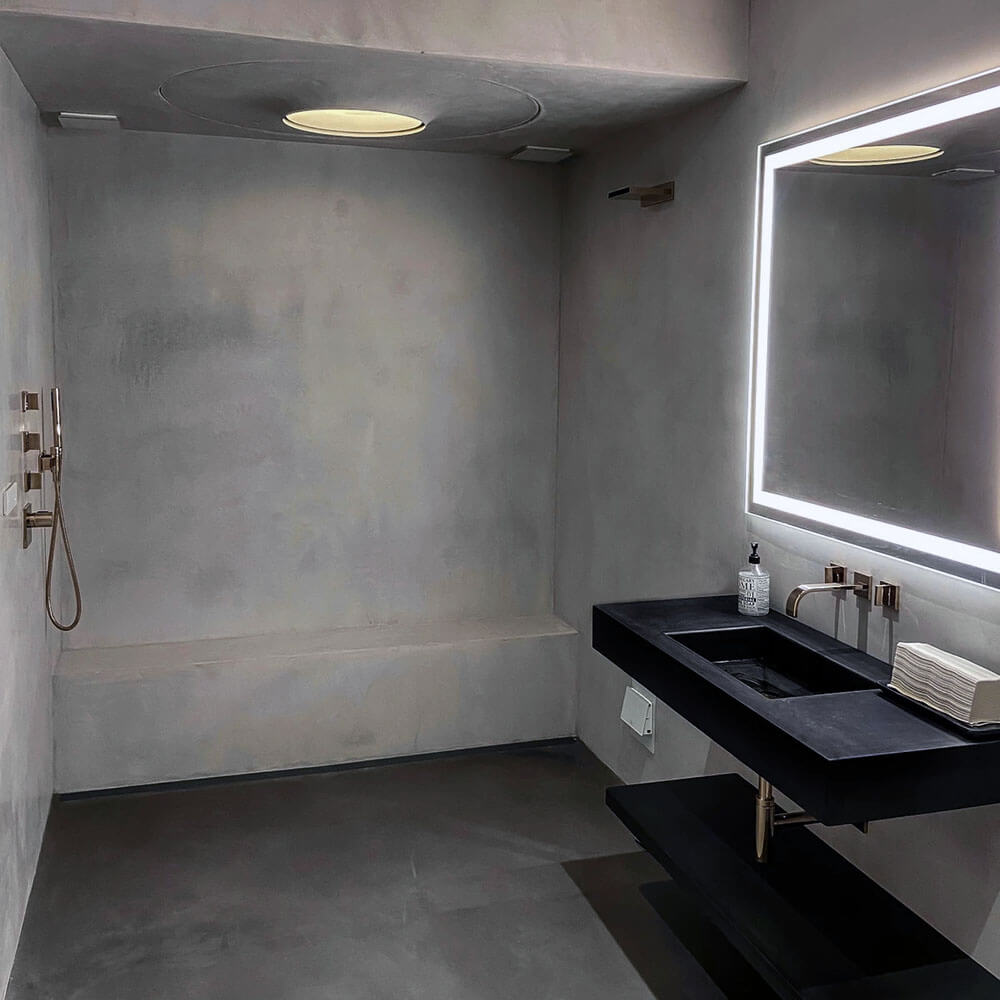
- Furniture and Fixtures: In some cases, GRFC is used for crafting furniture pieces, such as tables, chairs, benches, and lighting fixtures, due to its ability to achieve various shapes and designs.
- Art and Sculptures: Artists and sculptors use GFRC as a medium for creating sculptures, art installations, and decorative pieces due to its moldability and durability.
- Landscaping Elements: GFRC is used for outdoor landscaping elements like planters, fountains, and garden sculptures, providing long-lasting and weather-resistant features.
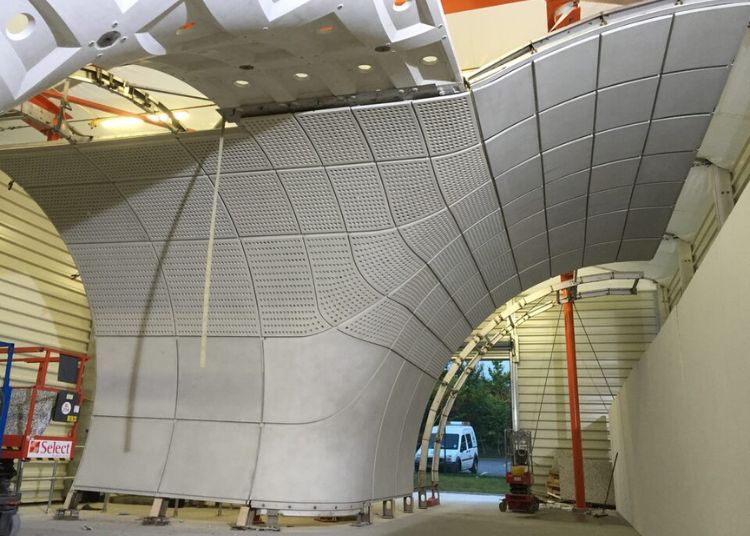
FAQ - Glass Fiber Reinforced Concrete (GFRC)
Does glass reinforced concrete need rebar?
Overall, it depends on the structural loading that GFRC will support. Typically, glass-reinforced concrete is used for elements with limited structural loads (e.g. cladding, facades, panels), where the fibre can play the role of steel reinforcement.
However, in case of increased compressive or tensile stresses (e.g. elements covering long spans), steel reinforcement might be required. Some recent studies have investigated using fibre-reinforced polymer (FRP) in conjunction with GRFC to increase concrete performance.
What is the typical glass fiber length and diameter used in GFRC?
In Glass-Fiber Reinforced Concrete (GFRC), the typical length and diameter of glass fibers can vary based on the specific requirements of the concrete mix and the intended application. However, generally speaking:
Length: The length of glass fibers used in GFRC commonly ranges from a few millimeters to several centimeters. Typical lengths can vary between 3mm to 25mm (1/8 inch to 1 inch) or even longer for specialized applications.
Diameter: Glass fibers used in GFRC typically have diameters ranging from 10 micrometers to 20 micrometers (0.0004 to 0.0008 inches). However, variations in diameter can occur based on the specific manufacturer’s product and intended use.
What are the alternatives to Glass Fiber in concrete mixes?
There are some alternatives to glass fibers in concrete mixes that offer reinforcement and diverse properties suitable for specific construction needs, including:
Alternative Fiber Type | Properties | Common Applications |
Steel Fibers | Enhance tensile strength, control cracking | Industrial flooring, tunnel linings, precast elements |
Polypropylene Fibers | Reduce cracking, improve durability | Residential applications, overlays, shotcrete |
Nylon Fibers | Enhance impact resistance, reduce crack propagation | Parking lots, pavements, thin-sectioned slabs |
Polyester/Polyethylene Fibers | Resist chemical/environmental degradation | Marine structures, wastewater facilities |
Carbon Fibers | High tensile strength, corrosion resistance | High-performance structural components, structural reinforcement |
Natural Fibers (e.g., Hemp, Jute, Bamboo) | Sustainable, decorative | Architectural panels, decorative elements, eco-friendly construction |
Sources:
- Technical Notes from the International Glassfibre Reinforced Concrete Association
- A review of the implementations of glass fiber in concrete technology – ScienceDirect – Study published in the International Conference on Design, Manufacturing, and Materials Engineering
- Types and Causes of Concrete Deterioration – Portland Cement Association
- Alkali-Aggregate Reaction (cement.org)
- Glass Fibers Reinforced Concrete: Overview on Mechanical, Durability and Microstructure Analysis
- Effects of Glass Fibre on the Strength and Properties of Concrete (researchgate.net)
- High performance glass fiber reinforced concrete – ScienceDirect
- Glass Fibre Reinforced Concrete (GFRC) – Anadolu University, Engineering Faculty, Department of Materials Science and Engineering
- Glass Fibers – An Essential Component of GFRC Concrete Countertops (concretecountertopinstitute.com)
- International Association of GFRC












